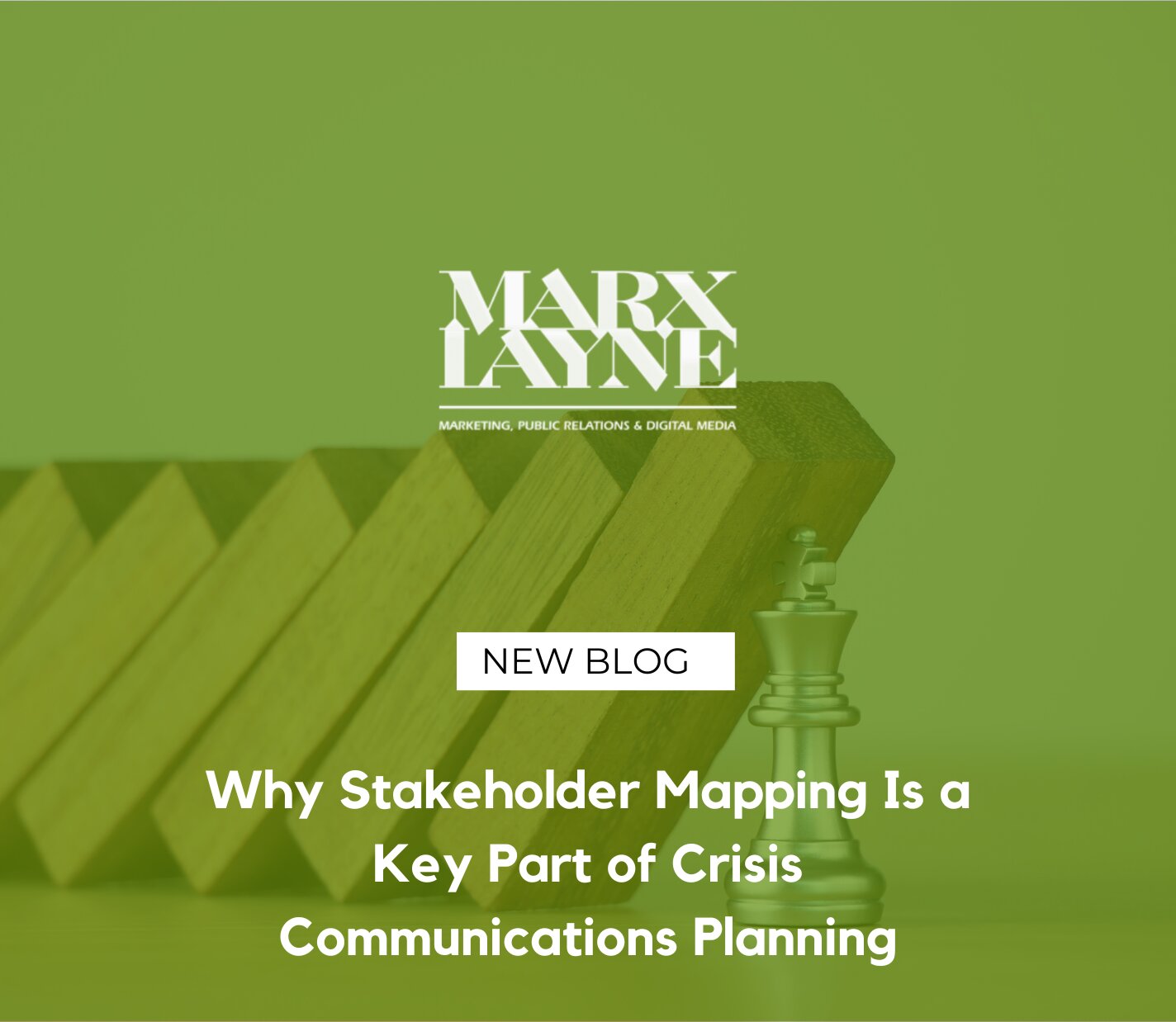
April 01, 2025
Why Stakeholder Mapping Is a Key Part of Crisis Communications Planning
In the heat of a crisis, companies often scramble to get their messaging right. They work to craft the perfect response, refine talking points, and manage media inquiries. But one critical component that can determine whether a crisis response succeeds or fails is often overlooked: stakeholder mapping. Stakeholder mapping is the strategic process of identifying, analyzing, and prioritizing the individuals and groups that can impact or be impacted by a crisis. Without a clear understanding of who these stakeholders are, how they think, and what they need to hear, even the most carefully crafted crisis response can fall flat.
By Mike Szudarek, Marx Layne & Company
In the heat of a crisis, companies often scramble to get their messaging right. They work to craft the perfect response, refine talking points, and manage media inquiries. But one critical component that can determine whether a crisis response succeeds or fails is often overlooked: stakeholder mapping. Stakeholder mapping is the strategic process of identifying, analyzing, and prioritizing the individuals and groups that can impact or be impacted by a crisis. Without a clear understanding of who these stakeholders are, how they think, and what they need to hear, even the most carefully crafted crisis response can fall flat.
Understanding the Power of Stakeholders in a Crisis
Stakeholders hold immense power in shaping the narrative during a crisis. These groups include employees, customers, investors, regulators, community leaders, media outlets, and social media influencers. Each has unique concerns and expectations, and their reactions can significantly influence public perception. For example, employees need clear and direct internal communication to maintain morale and productivity. Investors require reassurance about financial stability. Regulators demand transparency and compliance. Community leaders want to know how the company is mitigating harm. If an organization fails to communicate effectively with these groups, misinformation can spread, trust can erode, and the crisis can escalate.
The Role of Stakeholder Mapping in Crisis Planning
Stakeholder mapping ensures that companies are not reacting blindly when a crisis hits. Instead, it provides a structured approach to engagement that can be executed quickly and effectively. Here’s how:
- Identifying Key Stakeholders – Before a crisis occurs, organizations must compile a list of all potential stakeholders. This includes internal and external parties who may be affected or have influence over the response.
- Assessing Influence and Interest – Not all stakeholders have the same level of influence or interest in a given crisis. A government agency investigating a regulatory breach carries more weight than a vocal social media critic. Mapping allows organizations to prioritize who needs immediate attention and customized messaging.
- Understanding Stakeholder Concerns – Each stakeholder group has different concerns and motivations. Anticipating their questions and expectations allows for proactive messaging rather than reactive damage control.
- Customizing Communication Strategies – A one-size-fits-all approach to crisis communication is ineffective. Stakeholder mapping enables organizations to craft targeted messages that resonate with each group, using the right tone, content, and channels.
- Building Relationships Before a Crisis – Effective crisis communication doesn’t start when a crisis occurs—it begins long before. Stakeholder mapping helps organizations establish trust with key groups in advance, making it easier to navigate challenges when they arise.
Implementing Stakeholder Mapping in Your Crisis Plan
To integrate stakeholder mapping into crisis planning, organizations should:
- Regularly update stakeholder lists and categorize them based on influence and interest.
- Develop tailored communication templates for high-priority groups.
- Conduct scenario planning exercises that test crisis responses with different stakeholder reactions.
- Engage with key stakeholders in non-crisis times to build credibility and trust.
At Marx Layne & Company, we have helped businesses across industries develop robust crisis communications strategies that put stakeholder mapping at the center. When a crisis hits, companies that have done the work in advance can communicate with precision and confidence, protecting their reputation and business continuity.
Crises are inevitable. How organizations respond is what makes the difference. By prioritizing stakeholder mapping, businesses can ensure they are not just reacting but leading the narrative with clarity, strategy, and impact.
Share This Story, Choose Your Platform!
Marx Layne is your competitive advantage.
Your reputation and success are our only concerns.
